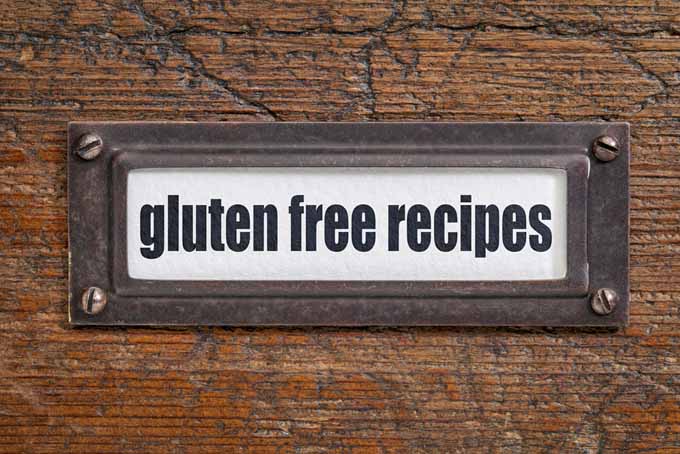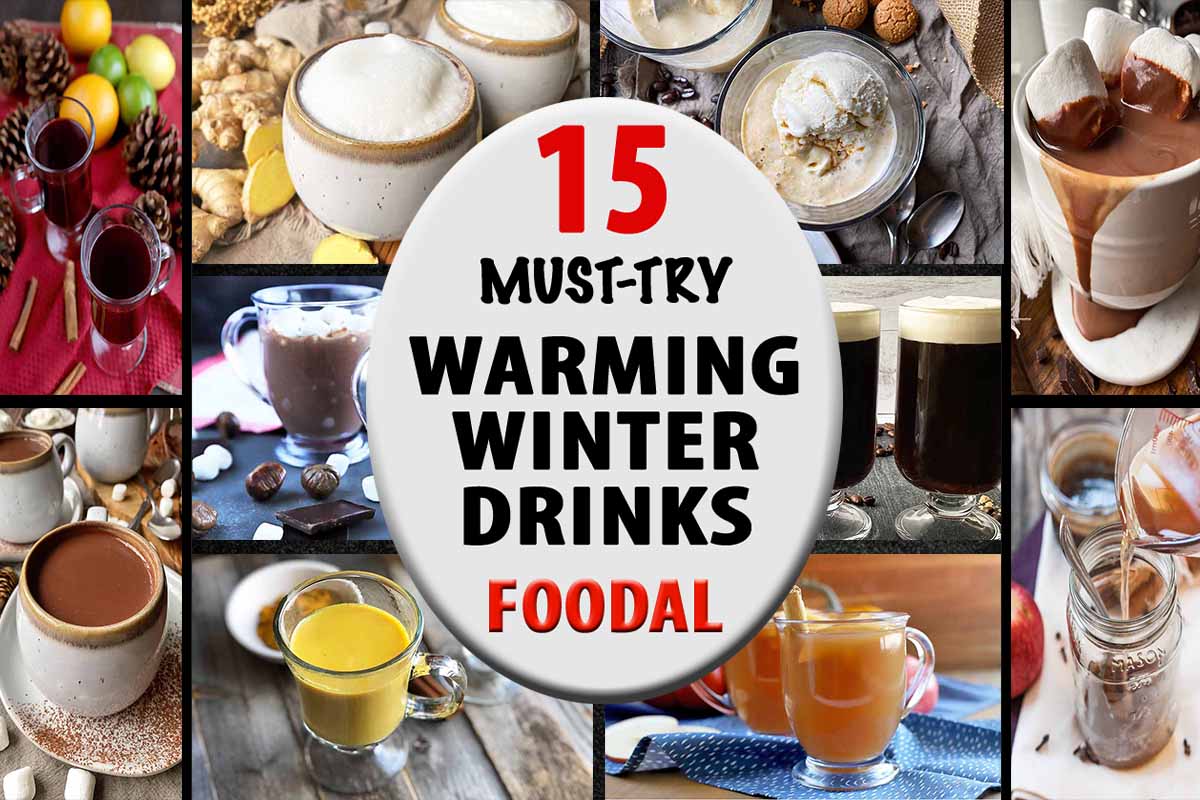In my first post on this topic I discussed food allergies, and the steps that you can take to adjust your diet and your lifestyle if you or a loved one is diagnosed with an allergy or intolerance.
To continue the series, in this post I will share some of my own experiences with food allergies during the holidays.

I will pass along some helpful tips that you can use at home for dealing with new changes in your dietary patterns and habits, eating out, and most of all, cooking at home.
Planes, Trains and Auto-Injectors
This holiday season will be the first time that I travel through the airport with an EpiPen in my carry-on luggage, and I’m sure many readers can relate.
I was surprised to be informed by the airline that I should have a doctor’s note on my person in addition to my prescription, but I was eager to comply.
I have a serious allergy to shellfish, shrimp in particular, and it’s unlikely that the flight attendants will be handing out shrimp scampi samples to passengers alongside the usual complimentary beverages and tiny bags of miniature pretzels (note to self for future reference: find out if Japanese or Korean airlines distribute shrimp chips as airplane snacks).
But, I’m able to travel with less of a risk of accidental exposure to the allergen that I’m sensitive to than many others, those with peanut allergies in particular.
My message for you in terms of travel does not really relate to the specific allergy or intolerance, though.

The point is that I didn’t realize that airport security might have any reason to question my reasons for carrying a medically prescribed device, and an expensive one at that.
Even if I didn’t need it on the airplane, I certainly wouldn’t want to risk being without it for the duration of my vacation, thousands of miles from home.
This leads me to my next topic:
For Those with Food Allergies, Information is Key
I’ll admit that my discovery related to the need for a doctor’s note was very last minute, and also sort of made up.
Let me explain:
Though would not be traveling over the Thanksgiving holiday, I would be traveling a few weeks later.
Because I discovered this information about carry-on requirements the day before Thanksgiving, I may have gone ahead and let my doctor believe I would be traveling the next day.
Please believe me when I say that I absolutely do not advocate lying! The truth is, I did it for science!
Well, no. I can’t really make that claim. But I did do it in part for my readers, because I had this blog post in mind when I made that call to the doctor’s office.
Because I was certain that others like me may not have been aware of the regulations and possible hurdles related to traveling as an individual with a potentially life-threatening food allergy, I may have indicated to the allergist’s receptionist that I would be traveling right away, to see whether they could help me quickly.
Sure, my experience is anecdotal. But I hope it will help all of you travel procrastinators out there to learn from my experience. Here’s my advice:
If you’re new to the food allergy game, do the research ahead of time, and plan wisely.
My Experiment’s Less Than Stellar Outcome
As it turns out, my doctor’s office does not have email, and I don’t have a fax machine (plus I was “practically already on my way to the airport”). So, they were unable to send me a doctor’s note electronically.
Instead, I had to rely on the US mail, with the (theoretical) hope that the TSA would let my EpiPen through security unscathed.

In my (mostly made up) panic, I realized that it might be helpful to ask for an extra EpiPen prescription that I could keep on file, in case mine was taken away, lost or damaged in the course of travel.
They obliged, and CVS has been calling and texting me practically every day since to remind me to pick it up, even though I have kindly asked them twice to please put it back on the shelf.
Turns out that some doctors actually provide an EpiPen prescription with a refill to allow for this possibility, but mine did not suggest this.
The point of this long story?
I needed to be my own advocate, and you will too.
Be Well Informed (And Always Pack Snacks)
As an individual or the caretaker of a loved one with food allergies, it’s important to be well informed, and to be ready to explain (and sometimes even defend) your situation to others.
Though many of us are inclined to be trusting when it comes to diet, life-threatening food allergies are not to be messed with.
Trust me, I know – though various family members have had serious food allergies and intolerances that others have been aware of for years and years, some of our relatives still can’t keep track of whether or not butter has lactose in it (it does), and the various grains that contain gluten besides wheat (spelt, barley and rye, just to name a few).
Rather than accepting holiday cookies without thought from the neighbors or sitting down to a restaurant meal without discussing the meal with the chef or waiter first, (or maybe even a meal at a relative’s house) it’s important to realize that you are your own (or your child’s) best advocate.

In fact, the Celiac Disease Foundation and other groups have recommended for years that those with celiac announce loud and clear to wait staff and chefs that they cannot eat food that contains gluten because it will make them become ill (either implying or explicitly stating that this will in fact happen quickly, in their very establishment).
Being your own advocate means speaking up, and being well informed.
More often than not, it also means bringing snacks, or possibly even your own sandwich or dish to contribute to a potluck. Though restaurants, family members and others do try their best, there will be times when you might find that mistakes have been made.
Maybe a salad that you were hoping to eat was accidentally contaminated with croutons or a sprinkling of nuts, or nothing on the menu fits your dietary needs.
Going hungry during these situations will definitely increase your stress, so plan ahead. Always have a few snacks on hand that you can eat in a pinch.
Even in the case of food intolerances that are not immediately life-threatening, like gluten and lactose intolerance, vigilance in terms of dietary intake is extremely important if you want to avoid a skin rash, or an unwanted digestive reaction (not to mention the potential for long-term digestive damage in some cases).
For many individuals who were recently diagnosed with a food allergy or intolerance, this means avoiding all outside food and preparing each meal at home, with safety in mind.
Eating as a State of Mind?
Before going into some healthy tips that you can use to stay informed in your effort to make tasty meals at home that fit into your new diet, I’d like to touch on emotional well-being for a quick moment first.
The truth is, many of us who have been diagnosed with food allergies and intolerances aren’t doing all that much dining in public in the first place.

I know how easy it is to fall into a funk in the face of a food allergy diagnosis, and it can be difficult to get over the feeling that the foods that once brought you so much enjoyment are suddenly off the table, literally.
Feeling like you “can’t eat anything” or that you “can’t eat out anymore” isn’t simply a struggle – it can be downright depressing or anxiety-inducing, especially during the holidays when so many family gatherings and events seem to revolve around food.
The upside to a new limitation to your diet is that you’re not alone, and you really will discover new products and recipes that you might never have tried before.
While it’s a sad fact that a growing number of people today have been diagnosed with food allergies and intolerances, this means the market has woken up, and taken notice.
I remember my mom’s struggle twenty years ago to find something that tasted good at the health food store, and that did not also contain wheat, dairy or soy.
Today, just about every time we talk on the phone, she has something to tell me about a new and exciting cookie recipe that she tried, or a gluten-free pasta that has definitively become her new favorite (I think I’ve heard about it three times now. Hi, Mom!).
Best of all, whereas these products were once hard to find, and eager eaters were often stuck shopping at expensive health food and specialty stores, products geared towards those with intolerances today have essentially “gone mainstream.”
That pasta that my mom loves so much? One of its best features is that it’s readily available in her regular grocery store.
On that note, back to the topic of home cooking…
Allergen-Free From Scratch
Unless you’re growing all of your food yourself (which is highly unlikely), you still need to be aware of how the various ingredients that you purchase and use in your home cooking are manufactured.
In addition to a thorough knowledge of your allergy, you’re going to need to read labels.
If you’re not somebody who cooked a lot before your food allergy diagnosis, this will be a learning process. Before you head out to the grocery store, it might help to think about what you’d like to eat.
The simplest way to do this is to gather a few recipes, right?
Here’s the most important advice that I can give you, something that I was taught way back in elementary school, and that applies nicely to the topic at hand: do not believe everything you read.
Let me give you an example of what I’m talking about. A few days ago, I started reading a cookbook (yes, I read cookbooks) that included handy little symbols to indicate which recipes were gluten-free.

A nice touch that’s particularly helpful for those with food allergies, right?
A few pages into it, I noticed a recipe that included barley, kamut or whole wheat flour, clearly marked with the GF symbol of approval. None of these grains are gluten free.
A few pages later, I saw another allegedly gluten-free recipe that contained beer, an easy mistake for many non-celiacs and others who are not in the know about the specifics of this diet.
My frustration with the cookbook in question reached a peak when I saw a recipe for seitan marked with the GF label. Seitan is straight up wheat gluten!
A word to the wise: though gluten-free labels on food packaging are certified by independent organizations, recipes online and items printed in cookbooks are not, and independent labeling organizations do not currently exist to certify food items as being “free” of many common allergens.
Please be careful to do the necessary research related to your food allergy diagnosis before you try cooking with any unfamiliar ingredients.
And now:
Here’s why Reading Those Labels is So Important
Food labels indicate the ingredients that a certain item contains, but you may be in for some surprises.
If you weren’t already a label reader at the grocery store, you’re going to have to start. Many dieters as well as sugar- and fat-conscious shoppers already read labels religiously, so this might not be a big adjustment for you.

It’s important to focus here on the list of ingredients on the back of the label. At the end of a lengthy ingredients list, you may even notice a shorter list that says “Contains wheat, milk,” or “Contains tree nuts,” to indicate the presence of common allergens.
To recap from my previous post, the list of common allergens varies by country. In the US, the FDA’s list of major food allergens includes eight items:
Though many labels will indicate the presence of a common allergen in bold or ALL CAPITAL LETTERS, it’s always a good idea to carefully read through the full ingredient list as well.
This is especially true for those who have an allergy to something less common, since US federal regulations don’t require that manufacturers do anything special to indicate the presence of other allergens on food labels.
Keep in mind that some allergens go by a variety of different names, and some foods use non-specific names (like “starch”) that should not be ignored when you’re dealing with a serious food allergy or intolerance.
Some less specific items indicate their source in parentheses after the name of an ingredient. For example, you may see “flour (wheat)” or “whey (milk)” to indicate that a common allergen is the source of a certain ingredient.
Be Conscious of Cross-Contamination
Cross-contamination can also be an issue at the grocery store (as it is at home, and at restaurants as well), especially in the case of severe food allergies.

Foods processed on the same manufacturing lines as others in packaging facilities that are not certified gluten free can be a concern for those with celiac disease, whereas pre-made sushi and other items found at the fish market can be a concern for those with severe seafood and shellfish allergies.
Sometimes the potential for cross-contamination is indicated on the label, but other times it is not. You may see a warning on the label that says something like “Manufactured in a facility that processes wheat.”
Reading Labels Beyond the Grocery Store
Remember that anything you ingest can contain allergens, including over-the-counter and prescription medications.
Lactose and other inactive ingredients like starches that are actually potential allergens are often added to medications as a filler or a coating, so you want to be sure to read those labels to check for these items as well.

For those who experience skin rashes and other external symptoms, reading the labels on cosmetics, soaps, lotions and other products that are applied to the body (without actually being ingested through the mouth) can also be important for those with food allergies.
At holiday gift-giving time, depending on your allergy, it may be appropriate to make close loved ones aware of this.
And keep in mind: if you’re a lip balm, lipstick or lip gloss user, you do actually lick that stuff off of your lips and ingest it throughout the day!
Be Prepared for Surprises
It’s important to remember that manufacturers may change the recipes and formulas used to make their products, some more often than others.
Just because you have bought the same brand of ketchup or salad dressing over and over again does not mean it’s not a good idea to check the label, just be to sure that nothing has changed.
Even if a food is very familiar to you, ingredients may change without an obvious warning or difference in the appearance of the label, especially if an item is highly processed with a long ingredient list.
Read the label at the store to avoid disappointment later, after you’ve already gotten the item home.
When in doubt, you can usually check manufacturers’ websites or contact customer service for allergen information. If you’re still not sure, you might want to look for a different brand or skip that product altogether.
If you get something home and realize you made a mistake or misread the label, don’t hesitate to return the product. If that’s not a possibility, give it away or even toss it if you have to.
Food allergies and intolerances should be taken seriously, and it’s not worth making yourself sick to avoid wasting a package or two of food.
Plenty of local food pantries will be happy to take your donation, if you discover that a product does not fit your new dietary plan before you open the package.
Having said that, I’d also like to throw a quick note in here on food pantries and charitable donations of food:
Food Allergies and Charitable Donations
Lots of us feel the spirit of giving during the holiday season more than any other time of year.
Many people are attuned to a deep sense compassion for those who are less fortunate, especially at this time of year that encourages us to focus on family, home, togetherness and thankfulness.
Statistics show that an average of 1 in 7 Americans today are food insecure, meaning they do not know where their next meal is coming from.

Food banks and food pantries are amazing resources throughout the year, because they help to fill in the gaps left by government funded food aid programs like SNAP (formerly food stamps) and WIC (the Special Supplemental Nutrition Program for Women, Infants and Children).
But the fact is, many of the donations that food banks and other charities receive are shelf stable items that are not valid dietary options for those with certain food allergies and intolerances, not to mention that they are typically far from healthy.
At this time of year when so many of us are focused on giving back to the community, please keep this in mind.
Consider contacting charitable organizations in your area to find out how you might be able to help to make a donation for those with special dietary needs in mind.
Conclusion
I hope this information helps you to get through this special time of year with a little less to worry about and a bounty of joyful dining experiences.
Do whatever you can to stay informed, advocate for your own dining needs, and share information with your loved ones. You will find new treats that you love, to add to your diet and to fill in for the old favorites.
If you don’t have a food allergy or intolerance yourself, chances are that you know someone who does. Please keep them in mind at celebrations and gathering with family and friends where food will be served.
The holidays are here, and it’s time to eat!
Tell me all about your adventures in holiday dining with food allergies and share your favorite recipes in the comments. Don’t forget to like and share!
About Allison Sidhu
Allison M. Sidhu is a culinary enthusiast from southeastern Pennsylvania who has returned to Philly after a seven-year sojourn to sunny LA. She loves exploring the local restaurant and bar scene with her best buds. She holds a BA in English literature from Swarthmore College and an MA in gastronomy from Boston University. When she’s not in the kitchen whipping up something tasty (or listening to the latest food podcasts while she does the dishes!) you’ll probably find Allison tapping away at her keyboard, chilling in the garden, curled up with a good book (or ready to dominate with controller in hand in front of the latest video game) on the couch, or devouring a dollar dog and crab fries at the Phillies game.




I feel bad for anyone that has a nut allergy since nuts are healthy and good for you, especially when you are on a diet. I wonder if one could find artificial flavored extracts for nuts like they have for almonds, they can enjoy the taste and not suffer any side effects to it. Still, I have to be super vigilant for this Christmas cooking since a friend of mine is allergic to walnuts, so I have to make adjustments to my brownie recipe for this year.
Thank you very, very much for mentioning food banks and the lack of allergy-friendly food. I volunteer in one and it can be physically hurtful to inform someone you can’t meet their or their children’s dietary need(s). I do what I can to get things in, but I can’t do nearly as much as I would like to. So thank you for taking the time to mention it!
These days more people are aware of those with allergies or an intolerance, but one should always be prepared and not be shy about telling a host what they can or cannot eat. Even if you go as far as bringing your own food to heat it, it can save hassle, and people will understand. It’s much better to be safe than to suffer.
My mother has a habit of buying quiches and I tell her I can’t eat certain ones, and I fall ill each time. Sometimes you need to put your foot down, as some people don’t understand allergies can develop.
This is a really timely reminder. I’d also say don’t neglect less common allergies. My poor daughter has recently discovered that she’s violently allergic to – of all things – lupin flour. I didn’t even know it existed, but it’s used in an increasing number of ‘artisan’ breads. Christmas parties are times when we often make little savouries to serve to friends when they visit and slices of a nice crusty loaf done as bruschetta is a popular savoury finger food. It’s one I do, but I’m *really* careful if I buy the bread rather than making it myself.
While I don’t have one of the more serious allergens, I still identify with part of this struggle. I had been sick for years with extreme digestive pain and other related issues. I hardly got any sleep and it was taking a toll on my entire life.
When I discovered I had those reactions because of dairy products, I thought “Okay, easy, I’ll just stop eating dairy!” I had no idea that I’d have to be SO careful about every little thing I eat. I started to avoid way more foods than I had originally thought because you have no idea how many foods contain something you’ll have a reaction to until you have to avoid them. I can’t imagine what it would be like to have my life threatened by my allergy!
I appreciate that you have shone a light on food intolerances around the holidays, a lot of people think I’m just being picky when I refuse their cakes and other goodies, but I just don’t want to be doubled over later in the day for the sake of not being rude.
It’s not commonly spoken about and while it’s our responsibility to make sure we inform people of our needs, it does get exhausting trying to explain things that are simply not a problem for most. It’s rough out there, and having the information without having to find out the hard way is nice.
Thanks for the great article Allison. I’m a highly allergic person myself and thanks to not reading labels properly, accepting cookies from my neighbors and not always carrying an EpiPen, I’ve had several life-threatening experiences where I had to be rushed to the hospital. I’m highly allergic to nuts, shellfish, bananas and anything that contains high volumess of iron or iodine in it, so all these tips definitely are helpful. Thanks again.
I have a cousin that is allergic to peanuts. One time we were in a store and the lady asked us if we would like to sample some chocolate chip cookies. We asked if they had peanuts in it. At the same time she couldn’t give us a guarantee that no cross contamination happened with possible peanuts. As a result my cousin decided to not eat the cookie at all and I feel bad because she is just a kid.
Thanks for posting this! I didn’t know that it was such a struggle to fly with an EpiPen. It seems like this would be a basic lifesaving device and wouldn’t require documentation. I hope people who need EpiPens read this, because it would be scary to have to choose between bringing your medication or having to cancel your flight. I hope the regulations around this change. On another subject discussed here, as someone who has brought food to potlucks, sometimes I forget that I used butter, or breadcrumbs, or something that someone might be allergic to. People without allergies don’t think about these things as much and may forget to mention all the ingredients they used quite by accident. It does help to have some pre-packaged food available if you have an allergy or are serving someone with one so that the ingredients are right there.